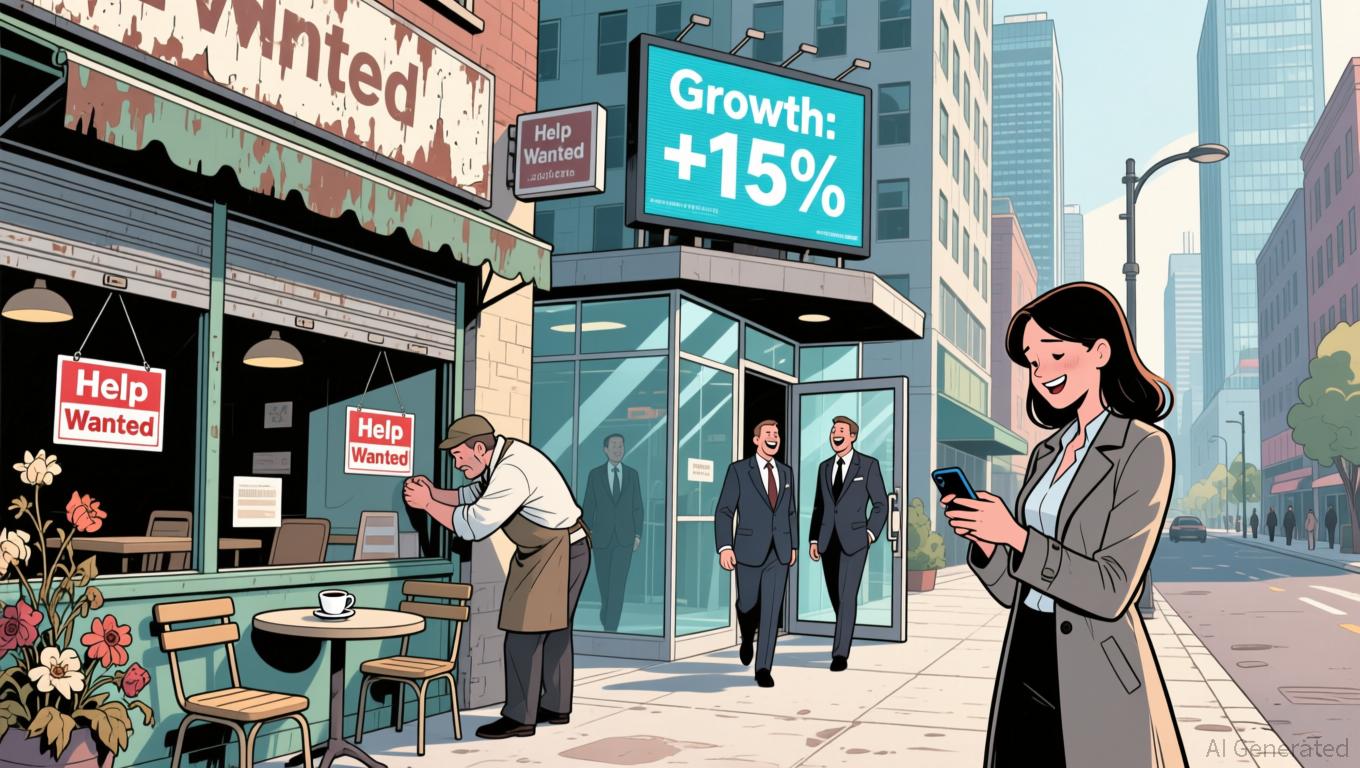Argentina’s Tax Break Draws U.S. Soybean Market Share Away in China
- Argentina’s soybean tax cuts and U.S. Treasury support enabled 20 rapid shipments to China, displacing 29% of U.S. soybean exports in 2025 vs. 51% in 2024. - U.S. farmers face 34% export tariffs to China, 40% price drops since 2022, and storage/logistics bottlenecks amid Brazil’s 71% dominance of China’s soybean imports. - Government-proposed tariff-based subsidies mirror 2018 trade war responses, but farmers prioritize stable trade relations over short-term aid to address long-term competitiveness. - Ru

American soybean growers are voicing significant concern as Argentina’s latest economic policies and export tax reductions have heightened global competition, making it harder for U.S. producers to sell to China, the world’s top soybean buyer. The U.S. Treasury’s proposal for a $20 billion currency swap with Argentina’s central bank, together with Argentina’s removal of export taxes on soybeans, has allowed Argentina to quickly secure 20 major soybean shipments to China, according to several traders. These changes have worsened the situation for U.S. farmers, who are already dealing with a 34% effective tariff on soybean exports to China and a 40% price drop since 2022.
The American Soybean Association (ASA) pointed out the irony that while U.S. farmers are busy harvesting, government financial backing for Argentina coincided with Argentina’s tax-free soybean exports to China, pushing U.S. soybeans out of the market. In 2024, soybeans made up 20% of U.S. cash crop income, totaling $46.8 billion, with China historically buying 51% of U.S. soybean exports. But this year, from January to August 2025, only 29% of U.S. soybean exports went to China, down from 51% in 2024. Meanwhile, Brazil now supplies 71% of China’s soybean imports, a dramatic increase from just 2% thirty years ago, further weakening the U.S. position.
The economic fallout is especially severe in rural America, where soybean farming accounts for 20% of jobs in many farming counties. As global demand for U.S. soybeans drops, excess supply has pushed prices lower. In the Midwest, soybeans are typically shipped to Pacific Northwest ports for export, but with fewer shipments, farmers are facing storage and transport challenges. Minnesota farmer Kyle Jore shared that many growers are forced to sell to cooperatives at prices below the market, leading to heavy losses. Agricultural economist Ryan Loy warned of “ripple effects” in rural areas, where business closures and population decline could follow as farms struggle financially.
This current turmoil is reminiscent of the 2018 U.S.-China trade dispute, when American soybean producers lost $27 billion in exports. A 2022 USDA study showed that the U.S. share of China’s soybean imports fell to a 30-year low of 19%, while Brazil’s share climbed to 75%. Although U.S. farmers have expanded into markets like the European Union, they still depend heavily on China, and rising costs for equipment and fertilizer—due to tariffs—have squeezed profits even more.
To help, the U.S. government has suggested using tariff revenues to fund farm subsidies, a tactic used during the 2018 trade conflict. However, experts warn that while such support can help in the short term, it does not solve long-term competitiveness issues. The Illinois Soybean Association has launched projects like the Soy Innovation Center to expand domestic uses for soybeans, but farmers stress that stable trade relationships are more important than government aid. “We want markets, not handouts,” said Todd Main of the Illinois Soybean Association.
This situation highlights how interconnected global commodity markets are, with policy changes in one country quickly affecting others. As Argentina’s tax break coincides with the U.S. harvest, farmers and industry leaders are watching export levels, prices, and diplomatic moves between Washington and Buenos Aires closely. With Argentina’s economic reforms and China’s changing buying habits, U.S. soybean growers face an uncertain future, depending on resolving trade disputes and adapting strategies to stay competitive worldwide.
Disclaimer: The content of this article solely reflects the author's opinion and does not represent the platform in any capacity. This article is not intended to serve as a reference for making investment decisions.
You may also like
Small Businesses Hit Hardest as U.S. Job Cuts Resemble 2009 Downturn
- ADP data shows U.S. small/medium firms cut 31,000 jobs in October 2025, contrasting with 73,000 large firm gains, as layoffs mirror 2009 crisis levels. - Major tech layoffs (IBM -8k, Amazon -14k, UPS -48k) and 153k October cuts highlight labor market fragility, with youth unemployment spiking to 10%. - Amazon faces EU DMA probes over cloud practices while raising $15B in bonds, attracting $80B demand, as Fitch reaffirms its "AA-" credit rating. - Fed may consider rate cuts by 2026 amid small business str

Bitcoin Updates: Kiyosaki and Buffett Clash—Debate Over "Money for the People" Versus Wealth on Paper
- Robert Kiyosaki criticized Warren Buffett's crypto skepticism, arguing Bitcoin serves as a hedge against collapsing traditional markets and central bank manipulations. - Buffett reiterated his stance against Bitcoin, favoring productive assets like stocks and farmland , with Berkshire Hathaway holding $308.9B in equities and $381.7B in cash. - Bitcoin ETFs saw $866M in outflows as prices dipped below $90K, contrasting with Kiyosaki's "People's Money" narrative and Saylor's bullish 2025 projections. - Hyb

AI Titans' Command of the Market Fuels Overcrowded Investments and Concerns of a Bubble
- Bank of America's survey reveals 54% of fund managers view FAAMG+T as the most crowded trade, surpassing gold , driven by AI's influence and Magnificent Seven dominance. - The seven tech giants (Alphabet, Amazon , Apple , Meta , Microsoft , Nvidia , Tesla) now account for 21.5% of S&P 500 weight and 26% of its net income over 12 months. - AI-driven investments surge, with Nvidia's CUDA platform (4M developers) and Tesla's 1M Optimus robot target highlighting sector concentration and growth expectations.

U.S. Job Market Slows Down Amid Rising Layoffs and Fed Considers Rate Reduction
- ADP data shows U.S. companies averaging 2,500 weekly layoffs in late October 2025, signaling a slowing labor market. - Major corporations like Amazon and Target announced large-scale layoffs, driven by shifting demand and cost-cutting pressures. - 55% of employed Americans fear job loss, while the Fed considers a December rate cut amid "near stall speed" labor conditions. - Global regulatory scrutiny of tech giants and AI-driven automation adds to concerns about employment impacts and economic stability.
